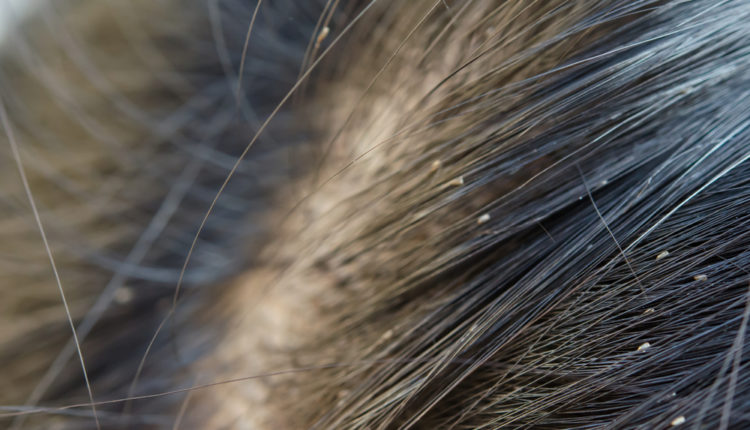Lice are tiny wingless insects known as parasites that live in human hair and feed on blood from the scalp. Although they can spread from person to person, lice do not spread any kind of disease.
Despite the stigma surrounding the presence of lice, lice are not a sign of poor hygiene. Families and children from all walks of life are susceptible to contracting them.
They are common among 3 to 11 year olds and affect more girls than boys. They live in all kinds of hair, whether it be thin, thick, straight or curly.
The Life Cycle of Lice

The life cycle of a louse begins as a tiny egg known as a “nit”. These nits are brown or yellow dots that are attached to the hair shaft close to the scalp. When a louse lays an egg, it “glues” it to the hair so it cannot be easily removed by brushing.
The egg hatches within 1 to 2 weeks after being laid. The shell of the egg appears white and remains on the hair shaft.
Baby lice, or “nymphs”, are about half the size of a sesame seed and take about 1 to 2 weeks to fully grow into an adult louse. The adult louse then begins to lay eggs.
The entire cycle repeats about every 3 weeks.
Symptoms of Lice
The presence of nits, nymphs and adult lice are (obviously) a sure sign that lice are present. Otherwise, watch for your little one scratching – especially around the back of the neck and behind the ears. Excessive scratching may cause irritation to the skin and small sores may appear.
Checking for Lice

Checking for lice takes a keen eye but is a pretty straightforward process:
- Sit your child in a brightly lit room. Lice run away from bright lights, so try to avoid using a flashlight to search for them.
- Wet your child’s hair. This will help slow down any lice on the scalp.
- Use a fine-toothed comb. Part your child’s hair, starting at the top of the scalp near their forehead. As you finish checking a section, clip the hair or braid it to keep it out of the way and keep track of hair that has already been checked.
- Look for nits. Unfortunately, you will have to check every strand of hair for the presence of nits. Adult lice, although quick moving, are fairly easy to spot. Nits can be more difficult, since they are tiny and look like dandruff.
The process of checking for lice can be lengthy depending on how thick and long your child’s hair is. Try finding a way to distract them, such as a movie or tablet, so that they sit still through the check.
You can even try to check your little one’s hair as they sleep.
Prevention of Lice
The trouble with lice is that you are likely not to know your child has them until weeks after they caught them. This can make it difficult to pinpoint when the lice were contracted.
However, most lice-related situations occur in school or daycare situations in which children play and learn in close proximity to one another.
You can help to keep lice from infesting your child’s hair by keeping long hair pulled back in a ponytail. Also, teach your child not to share personal items such as hats and brushes with other children.
Treatment for Lice

The best treatment for lice is an OTC (Over the Counter) medication that can be purchased at a pharmacy or drug store. Keep in mind that most of these products do not kill nits, so reapplication is important in ensuring the nymphs are killed before they can lay eggs.
Even if the treatment is complete, you should continue checking your little one’s hair for nits. Because nits take 1 to 2 weeks to hatch, you can consider your child clear of lice if none appear at least 2 weeks after treatment.
Some parents swear by at-home remedies for lice such as olive oil and tea tree oil. However, there is no substantial scientific research to support their effectiveness.

